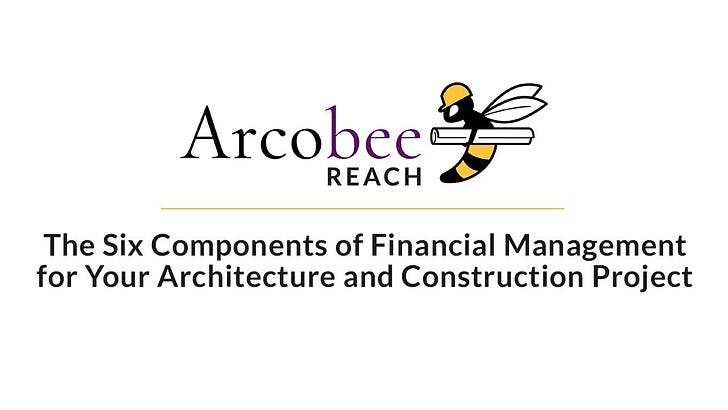Projects need not face financial issues or enormous additional costs, with some basic understanding of the financial management process. We show six key tools to keep your project flowing on budget.
Incurring financial problems on a property build-out is a terrible feeling. Many a project have gone bust due to financial issues, faced enormous additional costs, or cost two to three times the initial budget or worse, seemingly never ending. In this video and article we show the six core components of proper Financial management on your Renovation or New Build project.
One of the worst stories I’ve heard is a couple whose 12 week renovation took 52 weeks, and cost 3.5x the initial budget. There are projects big and small which face similar conditions, for instance, the infamous East Side Access megaproject in New York City. This is completely avoidable with some understanding and planning. As an Owner Manager, it is your prerogative to ensure that the financial management side of your project is fully handled – which means you need to understand the nature of the Architecture and Construction Industry, as well as the flow of money, and the key tools to understand for managing your projects. We will cover the flow of money in a different video.
We have identified Six key components to manage on the financial side of your Architecture and Construction project:
- Budgets
- Cash Flow
- Leveling
- Cost Tracking Reports and Invoicing
- Contingency
- Retention
Budgets
A budget is a simple first step in understanding the cost of your project. I am routinely surprised when I hear the amount of Owners who only work with either Estimates or do not take the time to Budget the full costs of their project from the start. Not budgeting your work is a recipe for cost overruns, sunk costs, schedule delays, and wasteful spending.
Budgets should be all inclusive, of all vendors and core parts of your project, and be priced in Dollar values as well as Dollar per Square Foot values (Cost per Unit of Area). You should also be sure to deduct any tax credits, or any landlord credits, that may be provided with your lease or property deal.
Budgets evolve with the time and development of a project, and thus should be tracked on at least an every-other-month basis. At the beginning of your project you should request an initial budget based on early drawings, Schematic Plans, renderings, and submit these to your choice of contractor(s) to achieve an early stage budget. The same process can be coordinated with vendors such as Architects, MEP Engineers, AV & IT designers and installers, and other project consultants. Only once you have a full set of design, construction, furniture and systems (AV, IT) drawings, can you submit your project for a lump sum (or other) bid to your vendors and procurers, to understand the real cost of your project.
As part of our Professional Financial Course, launching in Spring 2022, we’ll be launching templates, online and offline, from which you can build your own project budgets for new builds and renovations. Arcobee also offers professionally managed tools for monthly fees, which also includes budget management for your projects with one of our professionals and partners.
Cash Flow
Understanding the cash flow of a project from the start to the end is important from the very beginning of your project. Every stage of your project has unique financial conditions.
Some vendors work with Retainer payments and Deposits. Most Contractors also require some form of Pre-Construction Fee or Deposits, and Subcontractors will often require Deposits to procure materials in the early stages of a build-out.
Cash Flow is important because it ties right into your overall project schedule and critical path – to be stuck waiting for a payment or an important deposit can hamper your schedule in critical ways. Cash flow problems are the key fault of poorly planned construction projects, and can critically stall projects and result in major debt obligations, and major cost increases on your projects.
Contractors don’t just have Supers and PMs sitting around for work – especially in this new decade, we’re absolutely busier than ever before. All projects are planned and executed for constant flow of work (procurement and arrival of material included), so when a project entails a delay, especially due to lack of funds for payment, the entire process can go into jeopardy and stall, with the worst outcome being loss of resources. Plan your project cash flow early, and be sure to update it to track real costs per month, as well as fees still due on the project.
Leveling
Leveling is the act of comparing vendors and proposals on an even playing field. When we level proposals and services against each other, we’re comparing each vendors on an apples to apples basis.
There are key considerations to have in leveling:
- Compare the Costs Broken Out in the proposal
- If Costs are Not Included, by a vendor (be sure to check carefully), you must request this from the vendor in the form of a Revised Proposal.
- Compare the Costs of Alternates. If they’re not included.
- Compare the Team and Staffing, to ensure your team is capable and focused.
- Compare the Schedules Offered
- Where it applies, be sure to evaluate Procurement, Delivery, and Installation Fees.
- For some scopes (i.e. IT, Security) there are multiple configurations of achieving the same result – for such situations, be sure to also evaluate quantities of goods, compatibility with native systems, long term maintenance costs.
- Be sure your final cost includes All Chosen Options & Alternates.
While numbers are one important part of the project, we think that the Project Team and ability to work with the Owner and Team holds important weight, and should be evaluated seriously.
Cost Tracking & Reporting (CTR)
Once your project gets going, it’s important to start tracking all Proposals, signed Orders/Quotes/Proposals, and all invoices and payments. Owners and Managers should start this process from the very beginning of a project, and not just in the construction phase.
When processing invoices, a properly defined CTR will show you the progress of payments and balance remaining per vendor on the whole project, as well as the relationship between your Budget of planned costs, and real, hard costs actually spent on the project.
The Cost Tracking Report is one of the key templates and services here at Arcobee.
Use the CTR to hold your vendors accountable (plenty of them like to “bill early”) and also to manage the flow of your payments. Cost Tracking ultimately feeds back into both the Cash Flow analysis, and also into Retention.
Contingency
Adding a contingency on a project is a smart move, and highly recommended. Maybe fears about budget overruns can be averted by including a contingency on the full project.
Unfortunately all projects of this nature encounter additional costing well into the construction build. There are several categories where Contingency can be applied:
- Additional Design Changes, additions and reductions requested by the Owner/Manager. If early, midway, or near the end of a project an Owner/Manager would like to change the build-out in scope, the Design and Construction team will require additional costs to coordinate and build.
- Field Conditions that necessitate changes to the design and planned construction. For instance, a duct, a sprinkler line, or an electrical conduit may be in conflict with a planned installation, and require one or all of those items to be relocated or redesigned. In another project I recently executed, we discovered a steel beam meant to support a stair was actually bowed downwards, after the beam was exposed due to it being initially encased in concrete; the solution required additional steel bracing for the beam, necessitating additional costs.
- Mistakes & Omissions made by either the Design or Construction team – unfortunately even though we do our best to catch these issues during the Design and Bidding phase, professional do make unintended mistakes and miss conditions on the project. Sometimes omissions are made that necessitate additional costs once caught; and other times designer, contractors and subcontractors mistakenly exclude required scope on a project. This is supposed to be caught during the bidding and leveling phase, but unfortunately professionals do make mistakes.
We recommend adding a project wide 10% contingency, that is set in place once you actually achieve true costing of your project in Hard Design, Construction, Procurement/Delivery and Installation costs. Similarly, contingencies should be set for vendor orders also at the time the orders are placed.
Maintenance budgets may require some contingencies as well, which we’ll cover in detail in the course on maintenance.
Retention
Finally, all Owners should hold a retention on Contractors and on Subcontractors, to be held in entirety until substantial completion, and then only released fully upon final completion of the punch list, and of the entire project, signed off by the professionals.
Retention is something that should be coordinated and agreed upon in the Contract Procurement and Agreement stage, so that this is not a surprise to any vendor or subcontractor later in the project.
Retention is stipulated as part of construction payment standards, and we do not recommend working with supplier-vendors (companies and suppliers from whom you are buying products, as opposed to Professional Services) without holding retention on projects.
We typically recommend holding a retention of 10% on most vendors, until they are fully signed off and completed with Punch List and signed off on the project. The retention can begin to be released once your project has achieved Substantial Completion; however, a 5% retention should also be held until you achieve Final Completion, at which point it can be coordinated for a staggered release (first down to 2-3%, then to 1-2%, and then to Zero).
The Financial Program, Course and Tools – Coming Soon!
In Spring 2022, we’ll be launching the Arcobee Professional Financial Management Course. This is where we teach you, as an Owner Manager, the core skills to manage your renovation and new build projects, financially. It is a comprehensive course that offers you the full spectrum of knowledge, tools, process and templates for managing your Architecture and Construction projects, from the beginning of your project through to the very end. Our course is just thirty minutes a day, over a span seven days.
I also encourage you to participate in our REACH webinars once a month, to get acquainted with more core skills to teach you, the Owner and Manager, about the Project and Financial Management process in Architecture and Construction projects.
Just 30 minutes of learning a day, will ensure your project stays On Time, On Budget, and built to a high standard; you’ll also avoid tens of thousands of dollars in costly delays and mistakes.







 Table Of Contents
Table Of Contents

Leave a Reply